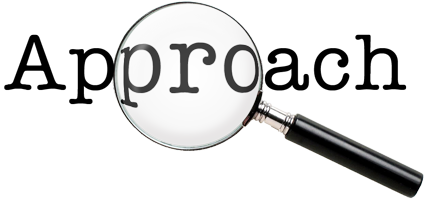How to frame (or reframe) problems
Coming up with new perspectives is
Q: For my next series of articles, are you more interested in profiles of
or
As a PM, we’re constantly going through four phases: observing (e.g., customer interviews), framing problems, imaging solutions (e.g., "press releases"), and building and testing solutions (e.g., prototyping). It’s an iterative process that doesn’t have clear lines separating one phase from another. And one of the hardest phases is framing or reframing problems. What makes it hard and can it be made easier?
What is framing?
Framing is
“the ability to shape the meaning of a subject … to choose one particular meaning(s) over another. When we share our frames with others … we assert that our interpretations should be taken as real over other possible interpretations …
-The Art of Framing
An example
Imagine you’re the PM for an amusement ride. Riders are waiting in line. The wait is very long. Some customers complain and are thinking of walking away. One could “frame” the situation as the ride is operating too slowly. But what if I “asserted” a different interpretation? What if I though people get bored waiting in lines.
Depending on how you interpret the complaints and situation, you can “frame” the problem in different ways, resulting in different solutions.
What makes it difficult to frame and reframe?
4 things make it challenging:
anchoring: how initial information changes our reference points
emotions: how we don’t like instability
mental laziness: how we’re wired to be lazy
experience detriment: how more experience can be detrimental
Anchoring
At work, most of us are presented with problems, questions phrased as solutions, or solutions to a problem. Examples:
How can we decrease the wait time for riders? -> Problem statement
Can adding more cars reduce wait time? -> Question phrased as a solution
Operating two cars would improve our ride capacity, which will decrease rider wait times. -> Solution
Regardless of which version you’re presented, the initial problem / solution statement will serve as an anchor. When you try to view the problem from a different perspective, you are unconsciously influenced by the initial information.
Emotions
It’s unsettling when you have to deal with ambiguities.
This unsettling feeling can be caused by the confusion we feel when considering multiple possibilities. It can also be caused by managing conflicting interpretations between people (e.g., I see the problem as a slow riders, you see it as bored customers).
We try to avoid these negative feelings, and thus, cut short the time to evaluate other interpretations.
Mental laziness
Framing and shaping meaning is tiring mental work. It requires:
analytical thinking to identify patterns and categorize similar observations
language to communicate to others
critical thinking to uncover assumptions, both conscious and unconscious.
conflict resolution to merge or converge on an unified view of the problem
Navigating this landscape, especially when you feel unsettled is difficult. We take mental shortcuts where possible.
Experience detriment
Through life experiences, we develop heuristics, a fancy word to say pattern matching (e.g., look both ways before you cross the street). These “instant” solutions reduce the mental work we have to perform when we face problems. That’s why with more experience under your belt, you’re likely to “jump” to a solution. To reframe a problem, you have to understand your heuristics and questioning them to see other possibilities.
This is difficult to perform because the heuristics you developed have “worked” in the past. It’s not natural to question rules that work.
How to approach problem framing
To make framing easier, we must address these four problems: anchoring, emotions, mental shortcuts and experience detriments.
Writing down the facts. Take the information given and write it down. You can’t run away from anchoring, but writing will help organize and be aware of your thinking. Example:
Given: Customers are waiting in line.
Given: The wait is very long.
Given: Some customers complain and are thinking of walking out.”
Acknowledge the unknown by asking questions. To tame our emotions, we have to acknowledge our emotions surrounding ambiguity. One way to do this is to state the unknown in the form of questions. Example:
How many customers are waiting in line?
What does very long mean? What is considered a long wait?
What are customers specifically saying?
What are customers saying other than about waits?
Dive deeper into needs, concerns, and assumptions. To make thinking easier, one framework is to explore needs, concerns, and assumptions. The framework reduces the mental laziness.
Needs: What are the possible needs of the user (e.g., what tasks does the customer want to complete waiting in line? What emotions must be fulfilled?)? Needs are about others.
Concerns: What are some concerns I have about given the facts? (e.g., Can I shorten the wait time? Do I have resources to execute the solution?) Concerns about me, the self.
Assumptions: What are assumptions behind the facts that I’ve made? Assumptions are what must be true. Examples.
Long wait is bad and any waiting time is bad
It’s not possible to have zero wait time
Thinking of walking out is bad; riders will walk out if they are thinking of walking out (cause and effect)
There are other amusement rides
Try to list as many as possible, even obvious ones. Looking for any “cause and effect”. For those with experience with a given situation, it’s at this stage you may have “solutions from the gut’. Write those down as part of this stage of unpacking assumptions.
3. Create different narratives. Now that you have needs, concerns, and assumptions, try to create different stories using situation, compilation, question, and answer. The goal of the stories is to imagine different outcomes, which will give different perspectives for framing. Examples:
Story 1:
Situation: Riders waiting in line for more than 5 minutes
Complication: It’s not possible to have zero wait times.
Question: How to encourage people to continue to wait in line?
Answer: Show a video of people videos of people saying it was worth the wait coming off the ride.
Story 2:
Situation: Riders waiting in line for 30 minutes.
Complication: Some of the riders are yelling loudly about the ride wait time to the attendee.
Question: How to encourage riders not to yell at the attendees?
Answer: Encourage riders to cheer whenever a ride launches.
Story 3:
Situation: Riders are thinking of leaving the line
Complication: All other riders are broken at the amusement park.
Question: How to encourage every person in line to ride the amusement ride?
Answer: Hand out paper time slips on when riders should come back.
The goal in this exercise isn’t to come up with the answers or perfect stories, but to create different stories to see different possible outcomes. For people who are solution oriented (e.g., have answers), you can work backwards from the answer by reconstructing the question, complication, and situation. For people who are focused on addressing a key concern, you can start with the complication. Once you have several (3- 5 different stories), you can take a step back and review the perspectives you’ve created.
If you have trouble at this step, one tip is to think up extreme constraints (e.g., limited time, no resources) to incorporate into your complication. Continuing with the amusement ride, here are some extreme examples:
What if every ride had to launch every 10 seconds?
What if you couldn’t add any more cars to the amusement ride?
What if you needed a solution that could be implemented in 1 hour?
Thinking up extreme constraints can create unique stories.
Practice
At the most basic level, getting at new frames requires identifying facts (what’s real?), inferences (what follows?), assumptions (what’s taken for granted?), and viewpoints (what’s the filter?).
- To Frame or Reframe
The next time you come across a problem or solution, take 15 minutes and practice reframing the problem to see if you can identify any new perspectives. You might surprise yourself on how you can creatively solve a problem.
Special thanks to Jeffrey Qua for pre-reading drafts and giving feedback. Want to be a pre-reader? Drop a comment below.
Sources: (ordinal rank of importance that contributed to this article)
Problem-Framing: A Perspective on Environmental Problem-Solving
To Frame or Reframe: Where Might Design Thinking Research Go Next?
Framing the Problem and Making Decisions: The Facts are Not Enough
Problem-Based Learning and Prospective Principals’ Problem-Framing Ability
AN ANALYSIS OF PROBLEM FRAMING IN MULTIPLE SETTINGS -> Summary: Digital design tools appear not to be detrimental to problem framing activities









